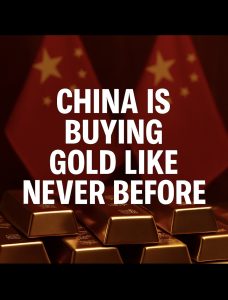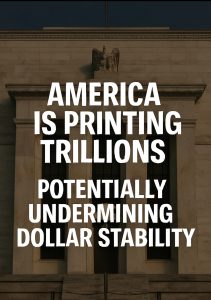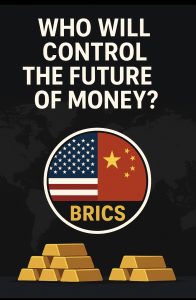Beneath the headlines of trade disputes and diplomatic posturing, a quiet but consequential battle rages on—a war not fought with missiles or tariffs, but with gold bars and monetary policy. At the center of this global economic arm wrestle are the United States and China, two superpowers vying for control over the future of global currency dominance, financial security, and geopolitical leverage.
⸻
The Symbolism of Gold in a New Cold War
In the modern financial era, gold has regained its historic role as a symbol of trust, stability, and power. While the U.S. continues to rely on the legacy power of the petrodollar and the dollar’s global reserve status, China has been quietly amassing gold reserves, increasing transparency in gold trading, and pushing for non-dollar-based trade settlements—all signs of a deeper strategy to weaken the dollar’s global hold.
 This is not mere economic prudence—it’s strategic. Gold cannot be sanctioned. It cannot be printed. And it cannot be erased by central bank policies. By shifting wealth from fiat to gold, China is insulating itself from U.S.-led financial systems and subtly laying the groundwork for a multi-polar monetary world.
This is not mere economic prudence—it’s strategic. Gold cannot be sanctioned. It cannot be printed. And it cannot be erased by central bank policies. By shifting wealth from fiat to gold, China is insulating itself from U.S.-led financial systems and subtly laying the groundwork for a multi-polar monetary world.
⸻
China’s Endgame: A Golden Yuan or BRICS Currency?
Beijing’s long-term ambitions appear increasingly clear. It is seeking to:
•Reduce its dependence on the U.S. dollar in trade and finance.
•Build trust in the Chinese yuan or a future gold-backed BRICS currency.
•Use gold reserves as monetary ballast to convince global partners of its financial seriousness and credibility.
If successful, this would mean a world where oil, commodities, and global trade no longer need the dollar. The implications for U.S. financial dominance would be seismic.
 ⸻
⸻
America’s Response: Inertia or Strategy?
The U.S. still holds the largest official gold reserves in the world—over 8,000 tonnes—but hasn’t added to them in decades. Instead, it leans on the established strength of its currency and the Western paper gold markets (like COMEX and LBMA), where gold prices are often influenced by speculative contracts rather than physical demand.
Some analysts believe this paper gold suppression helps maintain confidence in the dollar by keeping gold prices artificially low. But with China and Russia both increasing physical gold holdings and settling trades in alternatives to the dollar, the effectiveness of this tactic may be nearing its limit.
 ⸻
⸻
The Future: Currency Collapse or Global Reset?
If the dollar weakens too far, the U.S. may eventually have to consider backing it—at least partially—with gold once again, echoing Donald Trump’s recent comment:
“He who has the gold makes the rules.”
This wasn’t just bravado. It was a recognition that in the shifting landscape of global power, monetary sovereignty is once again rooted in hard assets.
⸻
Implications for the World:
1.A Weakened Dollar: If confidence continues to erode, inflation and higher interest rates could become a permanent fixture in the U.S. economy.
2.A Stronger East: China’s gold-fueled financial system could become a new safe haven for emerging nations weary of dollar-based sanctions or instability.
3.Gold as a Neutral Reserve: Central banks globally may boost gold reserves as a hedge, increasing demand and potentially driving up prices dramatically.
4.Potential for a Gold-Backed Digital Currency: A blockchain-based, gold-backed currency from BRICS or China could become the “new neutral” reserve currency in global trade.
 ⸻
⸻
Conclusion: The Arm Wrestle Has Just Begun
The visual metaphor is striking: two powerful arms—one American, one Chinese—locked in a tense arm-wrestling match over a table stacked with gold bars. Neither has won yet. But make no mistake—this is a contest over who will shape the rules of tomorrow’s global economy.
Gold, once a relic of the past, is again at the heart of the struggle for world dominance.

